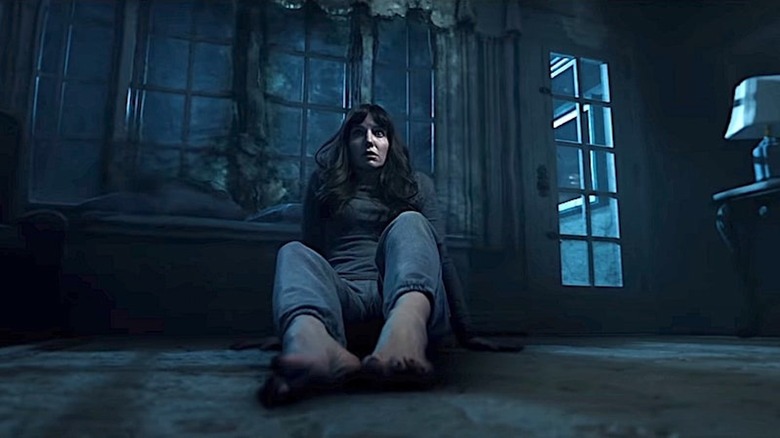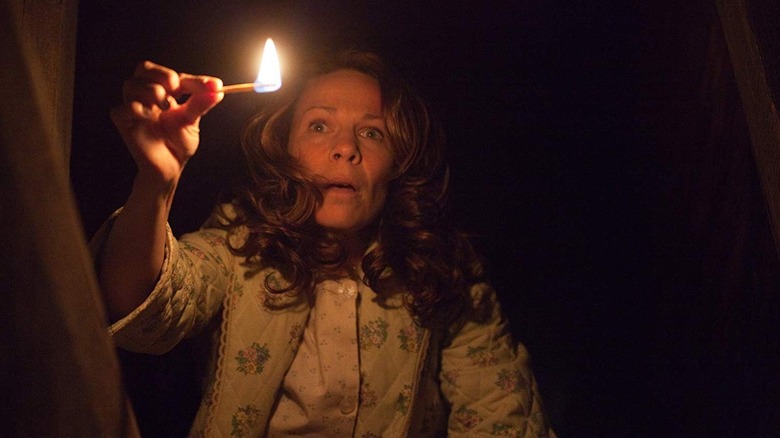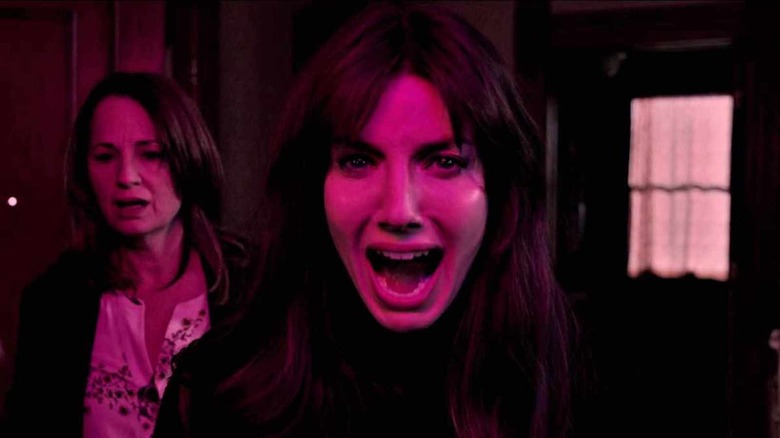James Wan Thinks Jump Scares Are Just Misunderstood
There is no cheaper form of fright than a jump scare. It's the horror movie equivalent of hiding in a sibling's closet while they're not paying attention, and springing out when they least expect it: extremely gratifying to the jerk doing the scaring, and astronomically annoying to the person getting scared.
This is not to say jump scares are an absolute evil. The device was born out of low-budget resourcefulness when producer Val Lewton, believing he could craft memorable horror movies with a fraction of the money being spent by Universal in the '30s and '40s, punctuated a quiet, meticulously crafted chase scene in "Cat People" with the unexpected arrival of a screeching bus (hence the filmmaking term "Lewton Bus"). Jump scares are good. Jump scares work. Most of our favorite horror films feature jump scares: "Psycho," "The Exorcist," "Halloween," "A Nightmare on Elm Street" and so on.
In fact, you won't find a more ardent defender of jump scares than modern master of horror, James Wan.
The difference between cheap and earned
In an interview with That Shelf (timed to the release of "Malignant"), the orchestrator of the hide-and-clap sequence in "The Conjuring" went to bat for the efficacy and importance of a well-earned jump scare:
A lot of times it's all about knowing what people know and then twisting that around. Now having said that, one of the things I no longer wanted to do, that I did not want to do with Malignant was make a jump scare movie. I'm not taking anything away from jump scares because great jump scares are really hard to pull off. I just don't think people out there understand it enough, and people don't give it enough credit because a great jump scare is really hard to design. It is as hard as making any kind of film. But people equate jump scares with cheap scares, and they're not the same at all."
Wan goes on to say that jump scares are difficult to pull off with a "cynical" modern audience, which is true. You lose the viewer's trust if, in 2022, you have a character inspecting a strange sound in a dark room only to have a cat bolt out of a cabinet. You've got to respect your audience, assume they know every trick you know, and work from there. Sam Raimi's "Drag Me to Hell" is a master class in this approach. Alison Lohman's first encounter with the demon is a series of feints that walks you right up the verge of the payoff numerous times before backing off. You know the big scare is coming, but after the third or fourth false alarm, you've lost your bearings. Raimi's got you. If you're a fan of the genre, that's a wonderfully horrible place to be.
Scare responsibly
Wan's "Malignant" is a lot of things, but it is definitely not a "jump scare movie." When the jumps come (e.g. Gabriel diving out of the pipes to attack Serena in the Seattle Underground), he executes them with impish glee. There's one sequence where someone unexpectedly crashes through a ceiling that's the perfect inverse of the laugh/scream reveal of the shark in "Jaws;" it's a shriek followed by uproarious laughter.
Jump scares are valuable, but, 80 years after the release of "Cat People," they are also for closers. In the hands of clods, they are the horror equivalent of a fart joke. You'll get a reaction, but your audience will hate you for it. Don't be that filmmaker. Study your Raimi and Wan. Be the jump scare you want to see in the world.


